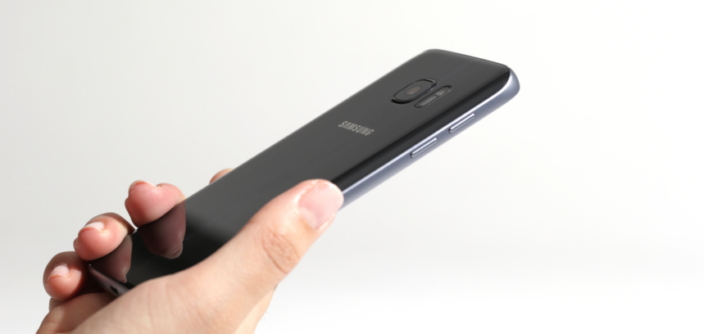[In-Depth Look] Setting a New Standard in Mobile Photography: The Camera of the Galaxy S7 and Galaxy S7 edge
on February 22, 2016

Recent years have seen smartphone cameras advance and evolve in incredible ways. While equipped with plenty of features and functions of DSLR cameras that allow users to capture great photos anywhere at any time, previous smartphone cameras didn’t quite stack up to DSLR cameras in terms of taking high quality photographs in low-light environments. However, the new Galaxy S7 has overcome these limitations by employing the Dual Pixel image sensor—a first for a smartphone.
With the new sensor, the camera of the Galaxy S7 allows for fast shooting while ensuring great image quality, regardless of lighting conditions. In addition, the flagship device includes new camera features such as Motion Panorama and Selfie Flash, to provide an entirely new phonetography experience.
![]()
Auto Focus: The True Determinant of Competitive Advantage
The Dual Pixel image sensor employed in the camera of the Galaxy S7 splits every single pixel into two photodiodes for on-chip phase detection, promising vastly improved autofocus performance.
Dual Pixel technology, which is utilized in selective, high-end DSLR camera models, as well as those of the Galaxy S7, sends light from the lens to two image sensors separately to adjust the focus, much in the same way that the human eye does. For comparison, only about one percent of image sensor pixels of the Galaxy S6 were capable of recognizing phase and contrast, while 100 percent of the image pixels of the new device can do so.
Galaxy S6 (left) vs Galaxy S7 (right)
Galaxy S6 (left) vs Galaxy S7 (right)
The advantage of the Dual Pixel image sensor in the Galaxy S7 is most evident when taking pictures in a low-light environment. The newest smartphone model is equipped with 1.4um pixels (a 56 percent increase in size compared to the Galaxy S6) and a large F1.7 aperture (which allows for 25 percent more brightness). Combined, these features enable for 95 percent more light compared to its predecessor, which subsequently results in a much brighter and sharper image. Furthermore, the new model employs autofocusing at considerably faster speeds, allowing for faster shooting.



You can enjoy more photos at the Samsung Galaxy website.

New Ways to Record Memorable Moments
Samsung introduced the Panorama Shot mode in the Galaxy S in 2010, enabling users to take a photo of a much wider scene than the one visible on the screen. The same feature was installed as the Wide Selfie mode on the front-facing camera of the Galaxy S5 in 2014 to allow for a wide-angle selfie of up to 120 degrees. With the Galaxy S7, Samsung introduced a new kind of panorama mode to upgrade the smartphone photography experience.
The Motion Panorama Shot feature lets one record the movements of the subject being photographed in the Panorama Shot mode. The resulting images are as vivid and vibrant as videos. By simply swiping the captured image or moving the device a bit, users can view the motions of the captured panorama shot.
Another new feature of the Galaxy S7 is Hyperlapse, a variation of time lapse photography tailor-made for smartphones. Through Hyperlapse, users can compress hours of recording into seconds to illustrate the subtle movements of the photographed subject. The device automatically selects frames with soft and stable images, while minimizing camera shake with its adaptive vDIS (Video Digital Image Stabilization) function to produce a stable time lapse video.
The new feature automatically adjusts shooting speed based on the subject’s movements. It shoots slow moving subjects faster, and vice versa, making time lapse recording easier and more intuitive for beginners.
Putting Your Best Face Forward
Samsung has worked to lead the development of front-facing handset cameras since 2002, when it developed the first-ever phone capable of taking selfies. The company has since continued its efforts to increase pixel resolution, support wide-angle photography and introduce brighter lenses on mobile devices. The front-facing smartphone camera has evolved yet again in the Galaxy S7 to better meet the needs of self-expressive consumers.
The front-facing camera, like the rear camera, features an F1.7 lens to delivers bright, colorful selfies, even in low light. It also supports a Selfie Flash feature, which enables the user to use the AMOLED display of the phone as a camera flash when taking selfies in a low light environment (lower than 20Lux).
Taking advantage of the large, 5.1-inch display of the Galaxy S7, the camera flash has a greater but softer light-emitting surface than that of its LED flash. This results in a much softer surface lighting effect, which translates into a more colorful expression of the whole face. Once the device’s camera recognizes your face, you can adjust the intensity and direction of the light in order to create a natural lighting effect to make your facial features appear more defined.
The Galaxy S7 has also improved on its Beauty Face Shot mode by adding a 3D lighting effect to deliver brighter and clearer selfies, while Wide Selfie Shot mode creates a panorama effect. Additionally, the real-time High Dynamic Range (HDR) feature allows for images with even richer colors.
*All functionality features, specifications and other product information provided in this document including, but not limited to, the benefits, design, pricing, components, performance, availability, and capabilities of the product are subject to change without notice or obligation.








